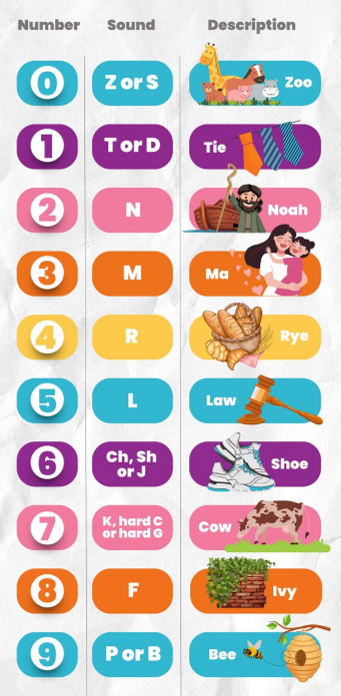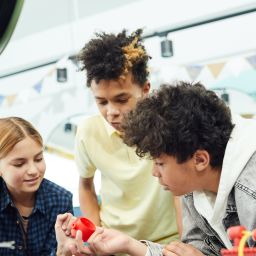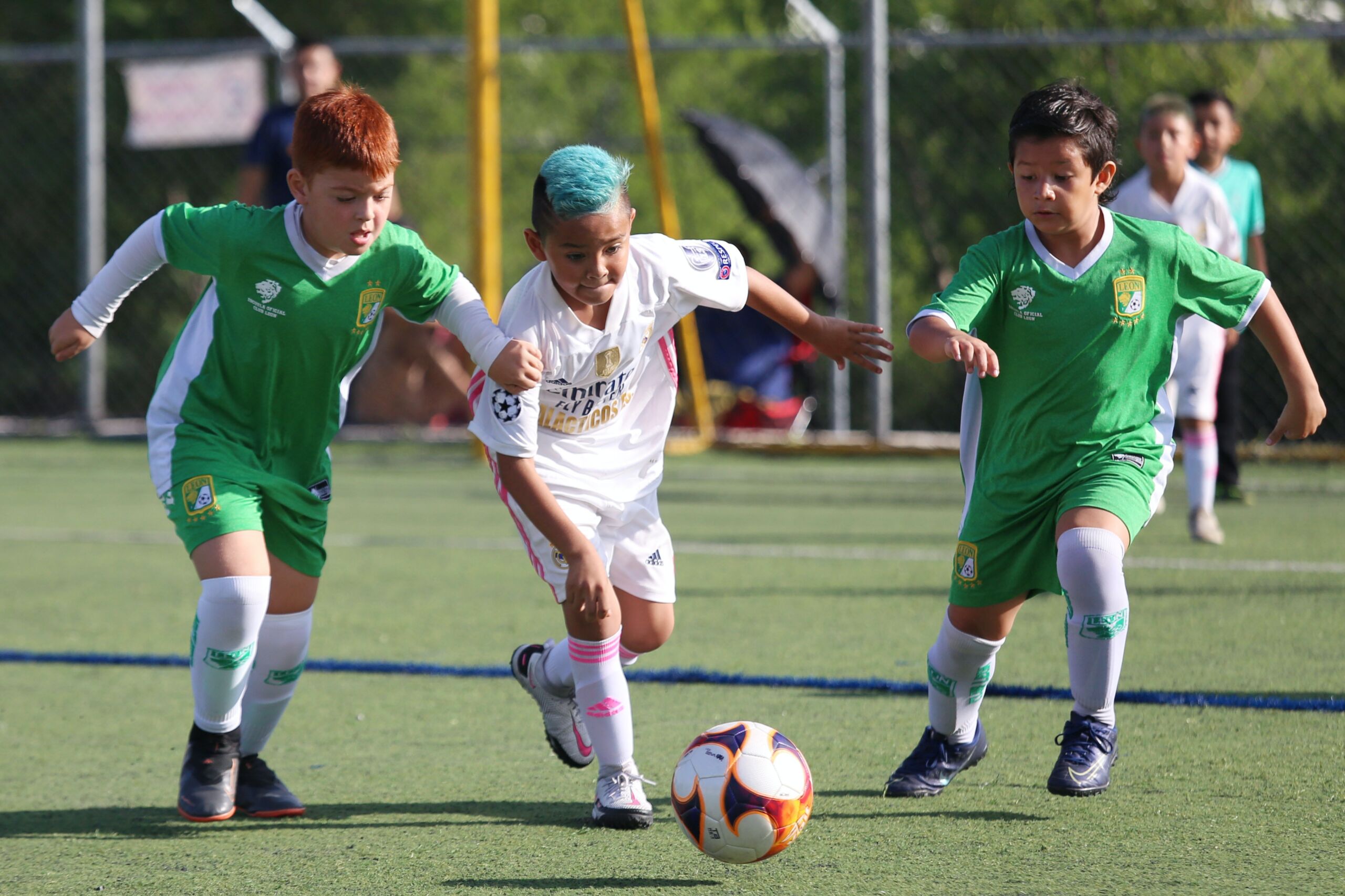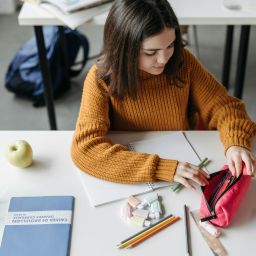
FH Summary: Introducing Harry Lorayne’s PEG system to children can significantly boost their memory skills, leading to improved academic performance and confidence. This mnemonic technique uses simple, memorable images for numbers 0-10, making memorization of numerical info engaging and effective. Early adoption of such memory techniques fosters cognitive development, discipline, and better focus, helping children learn more quickly and enhancing overall personal growth.
As parents, we are constantly looking for ways to give our children the best possible start in life. Developing good habits early on can create a powerful upward spiral in a child’s life, fostering growth, confidence, and success. One of the most impactful habits you can instill in your children is the ability to effectively use their tremendous powers of memory. In this blog post, we will delve into the importance of memory techniques and how Harry Lorayne’s PEG system can be an essential tool in your parenting toolkit. Please refer to our memory primer here. HYPERLINK
Understanding the PEG System
Harry Lorayne, a renowned memory training expert, introduced the PEG system as a way to enhance anyone’s ability to memorize numbers. If you think about it, vision is our most common sensory stimulation. We take in more info through our eyes than any of our other five senses. Over time, we’ve built up a very strong connection between the visual centers of our brains and our memory. That’s why you might not be able to remember how something smelled or the exact phrasing that you heard a few years ago, but you’ll likely have a strong visual image of that experience. Visual imagery becomes the dominant primary sensory tool for the brain. In contrast, numbers are particularly hard to memorize because they don’t lend themselves to a particular mental image or have an easy path to visualization.
By drawing on the strengths of everyone’s memory and associating numbers with images, your memory can improve immediately. Champion mnemonists have always used some form of the PEG system in their training and performance. This system can be incredibly beneficial for children, helping them to retain numerical information more effectively. The PEG system works by creating a mental “peg” for each number and linking it with an image or word that is easy to remember. For example, in our system the number 1 is associated with a “tuh” or “duh” sound and therefore if you wanted to remember the number 11, you could visualize two “tuh” or “duh” sounds. For example, a tot (as in tater tot or whatever the strongest connection in your mind might be). By connecting numbers to visual images and using your child’s natural creativity, you’ve solved the biggest impediment to memorizing the strings of numbers and dates that will become a key testing ground for your child in their academic journey.
In the PEG system, every word can be turned into a number and vice versa. All consonants are linked to a number in a way that makes sense, ie “tuh” and “duh” sounds are formed similarly in the mouth. Just like Z and S sounds which stand in for the number 0.
So each number, zero to nine, is allocated a consonant sound:
0 = Z or S
1 = T or D
2 = N
3 = M
4 = R
5 = L
6 = Ch, Sh or J
7 = K, hard C or hard G
8 = F
9 = P or B
To illustrate, here are the images and words for numbers 0-10:
Zoo: Imagine a zoo filled with animals.
Tie: Picture a colorful tie.
Noah: Visualize Noah from the biblical story with his ark.
Ma: Think of your mother.
Rye: Picture a loaf of rye bread.
Law: Imagine a judge’s gavel.
Shoe: Visualize a tennis shoe.
Cow: Picture a cow in a field.
Ivy: Visualize ivy growing on a wall.
Bee: Imagine a buzzing bee.
Please see our infographic below to help your child memorize each number and it’s corresponding sound and visual image.
By memorizing these ten images your child has a much better chance of remembering the string of numbers 4910 which would just be a loaf of rye bread (4) with a bee (9) buzzing around it and a tie (1) dragging the loaf of rye to a zoo (0). That’s just one example. Challenge your child to come up with their own powerful visualizations that will be retained more strongly by their brain.
For more advanced mnemonists, you could take the number 4910 and that would just form the word repeats – the R equals 4, the P equals 9, the T equals 1 and the S equals 0. In the visual image, you might see something being duplicated or someone yelling “repeats” while they are repeating the phrase.
Why Memory Techniques Matter
Developing strong memorization skills early in life has several benefits:
§ Improved Academic Performance: Children with strong memory skills can retain and recall information better, leading to better performance in school.
§ Increased Confidence: Mastering memory techniques can boost a child’s confidence, making them more eager to participate in learning activities.
§ Enhanced Problem-Solving Skills: Memory training encourages creative thinking and problem-solving, which are essential skills for lifelong success.
The Science Behind Memory and Child Development
Research has shown that the brain’s plasticity, or its ability to change and adapt, is greatest during childhood. This makes it the perfect time to introduce memory techniques. Children who engage in effective memory training will increase their ability to memorize information more rapidly than those who don’t. This indicates that early memory training can have long-lasting positive effects on a child’s cognitive development.
Implementing the PEG System at Home
Here are some practical steps to introduce the PEG system to your child:
§ Start Simple: Begin with numbers 0 to 10 and create fun, memorable images for each number using the words provided above. For example, 0 is a zoo, 1 is a tie, 2 is Noah, and so on.
§ Make It a Game: Turn memory practice into a fun game. Ask your child to recall the images associated with each number and reward them for their efforts.
§ Use Daily Activities: Integrate the PEG system into daily routines. For example, when you go grocery shopping, ask your child to use the PEG system to remember items on the list.
§ Be Patient and Encouraging: Learning a new skill takes time. Encourage your child and celebrate their progress, no matter how small.
Real-Life Success Story
Let’s take a look at how the PEG system transformed the life of eight-year-old Emily. Emily struggled with remembering her multiplication tables, which affected her confidence in math class. Her parents decided to try the PEG system. They associated each number with a fun image and practiced daily with Emily. Within weeks, Emily’s ability to recall her multiplication tables improved dramatically. Not only did her math grades improve, but she also became more enthusiastic about learning.
Emily’s favorite peg images were “zoo” for zero, where she would imagine animals lining up in rows, and “bee” for one, visualizing a bee buzzing wrapping around her visualizations. This imaginative approach made learning engaging and effective for her.
Creating an Upward Spiral
Introducing memory techniques like the PEG system can create an upward spiral in your child’s development. Good habits, when established early, can lead to elevated foundations of childhood development. By focusing on high-leverage childhood habits, you are setting your child up for a future filled with opportunities.
Memory training doesn’t just stop at academics. It plays a crucial role in overall cognitive development and everyday life skills. For instance, children who master these techniques can apply them to various aspects of their lives, such as remembering their chores, being punctual with their tasks, and even recalling important dates and events. This holistic development creates a foundation of discipline and organization.
The Broader Benefits of Memory Training
In addition to academic benefits, memory training can also help in areas such as:
§ Increased memory: Enhancing general memorization skills can aid in learning new languages, playing musical instruments, and more.
§ Better academic performance: If a child has a process and an elevated skill level when it comes to memory, they will likely have more time to grasp high-level concepts that will set them apart from their peers.
Moreover, children who develop strong memory skills are better equipped to navigate social interactions and relationships. They remember details about their friends and family members, which fosters deeper connections and empathy. This skill set can be particularly beneficial in managing emotional intelligence, a critical component of personal development.
Conclusion
Investing in your child’s memory skills through Harry Lorayne’s PEG system is a simple yet powerful way to enhance their cognitive abilities and overall development. The key to success is consistency and making the learning process enjoyable. By incorporating memory techniques into your child’s daily routine, you are helping them build a foundation for lifelong learning and success.
For more tips on developing essential habits in your children, visit the First Habits homepage and sign up for our weekly newsletter. Together, let’s create a brighter future for our children through the power of good habits and effective memory techniques.
Please check out Harry Lorayne’s original book here.
Also please see this Youtube video for a good explanation of the memory techniques described in this blog.













